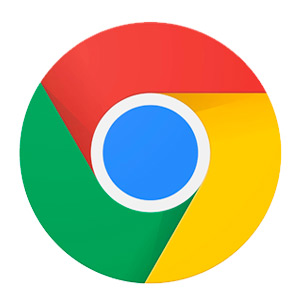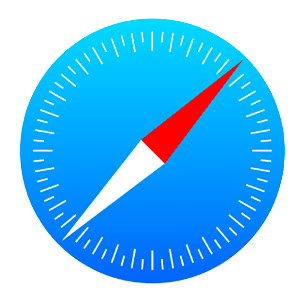Still clinging to your cable box like it’s a family heirloom? No judgement! It’s been a part of your life for years—if not decades. And you’ve had some good—maybe even great—times together. Often with your family and loved ones by your side. But let’s face it: cable isn’t what it used to be. The prices? Yep, going up—year after year. The channel lineup? So many changes. And customer service? Do they have customer service? Isn’t it time to learn how to switch from cable to streaming services?
After all, streaming services have quietly taken over the entertainment world. Your friends and co-workers are bingeing on the latest hits, chatting about exclusive shows, or catching big games live. Without a cable subscription in sight.
You may be left wondering, when did everyone else make the switch?
Cutting the cord isn’t just trendy. It’s practical. You can save money, watch shows you actually want to see, and ditch the hassle of long-term contracts and clunky equipment. Plus, so many shows and sporting events have also transitioned away from cable to streaming platforms. So, you may be missing out on more than you think.
It’s all okay. Learning how to switch from cable to streaming services is smoother and easier than you think. Especially with this step-by-step guide.
How to Switch from Cable to Streaming Services in 6 Simple Steps
Step 1: Evaluate Your Current Cable Plan
Before you jump ship, it’s worth knowing exactly what you’re leaving behind. Take a good look at your current cable plan—what are you really paying for, and are you actually using it? My son-in-law worked for a cable company, and when he went through this process, he realized even with his employee discount, he was paying too much for what he actually used. (Shhh…)
Start by reviewing your monthly bill. (We know, not the most fun way to spend an evening.) But chances are, you’ll find hidden fees, extra equipment charges, or packages you forgot you were even subscribed to. (Now that the kids are in high school… or perhaps even college, those kids shows can probably go.) Add it up, and the cost of cable might be much higher than you realized.
Next, figure out if you’re under contract. Some cable providers still lock customers into 12- or even 24-month agreements. Early termination comes with additional fees. If that’s the case, check how much time is left and what it would cost to cancel. In some cases, the savings you’ll get from making the switch to streaming could make it worthwhile, even if you’re cutting ties early. But it’s best to know the details upfront.
Now it’s time to look at your viewing habits. What do you enjoy watching? If you only tune into a handful of channels or a few shows, you may be paying a whole lot for not that much. On the flip side, jot down what would be hard to live without. This will help you make the right pick for streaming services later.
Pro tip: Once you’ve made the decision to cancel, time your transition wisely. We recommend overlapping the last few weeks of your cable service as you set up streaming platforms to avoid not only gaps in entertainment but to minimize stress as you make the transition.
Step 2: Check Your TV Setup
Before you can dive into your new world of streaming goodness, you’ll want to make sure your TV is up to the task. Luckily, if your TV is less than 15 to 20 years old, it’s probably already set up for streaming with minimal effort on your part. Some newer TVs (less than 5 years old) even come preloaded with popular streaming apps.
If you’ve got a Smart TV, you’re golden. All you need to do is connect it to Wi-Fi, log into your favorite apps, and start viewing.
If, on the other hand, your TV is a bit older, no problem. You can still stream by adding a small, affordable streaming device. As long as you have an HDMI port (which most TVs from the last 15+ years have), you’re all good.
Popular streaming devices include: Roku, Amazon Fire TV Stick, Apple TV, and Google Chromecast. These gadgets typically plug right into the back of your TV and connect to your Wi-Fi. Setup usually takes under 10 minutes, even if you’re not very tech-savvy.
If you’ve got a DVD player or game console, you may already have a streaming-capable device without realizing it. For instance, Xbox, PlayStation, and Blu-ray players often support streaming apps.
Pro-Tip: Consider a remote upgrade. You can find devices that allow you to control everything with just the sound of your voice. Some also have quick-launch buttons, so you can find the channel of choice with one click. And if you like to watch but don’t want to disturb others, you can even find remotes that are set up for private listening via headphones.
Step 3: Assess Your Internet Plan
Streaming is only as smooth as your internet connection. If your Wi-Fi cuts out during the big game or leaves you buffering during a watch party, it’s a big bummer. Before canceling cable, it’s a good idea to make sure your internet is up to the streaming task.
As a general rule, you’ll need at least 25 Mbps for one HD stream or 50+ Mbps for multiple devices or 4K content. You’ll want even more speed if you’re upgrading your entire entertainment environment (e.g., for gaming or watch parties) or working remotely on top of streaming.
You can check your current internet speed with a quick online speed test. (Just search “internet speed test” in your browser.) If your system can’t support your streaming habits, it might be time for an upgrade.
What if your cable company is also your internet provider? If you’re happy with your provider, you don’t have to cancel both. Many people keep their internet service and just drop the TV portion. First, though, you’ll want to check the internet plan to ensure it’s reasonably priced without being part of a bundle.
Since you’re already checking prices, why not take a look at other available plans? For example, AT&T offers plans that are designed for streaming, gaming, and smart home use—without the baggage of traditional cable packages. Plus, you may be able to negotiate better rates when switching to a new plan.
Step 4: Identify Your Streaming Needs
Now comes the fun part! Figuring out what you really want to watch. One of the biggest perks of switching to streaming is how much you can customize your entertainment experience. Instead of 100+ channels of crap on the TV to choose from, you get to build your perfect lineup.
Think about your viewing habits:
- Are you a movie buff?
- Do you follow any specific shows or creators?
- Is your fav sports team a non-negotiable?
- Are you wrangling a household of people with wildly different tastes—e.g., a sports buff, an anime fan, and a true crime detective?
- Do you like TV on in the background? Or does it only come on when you are ready to be immersed?
Once you know your must-haves, it’s easier to pick the right mix. Here’s a quick cheat sheet to help guide you:
- Live TV replacements, such as Hulu+ Live TV, YouTube TV, Sling TV, or Fubo TV, offer a traditional cable-like experience, including news and sports.
- On–demand powerhouses like Netflix, MAX, Prime, and Apple TV+ offer a wide variety of original series, documentaries, and, of course, movies. Both the classics and new feature films.
- Niche favorites: Love true crime, K-dramas, British comedies, or anime? There’s a streaming service for that (think BritBox, Crunchyroll, or Acorn TV).
- Freebies: Not all streaming services come at a cost. Some services, like Pluto TV, Tubi, or Freevee, offer content at no cost. You will, however, get ads.
You may also benefit from bundling. Many platforms have joined forces, allowing you to save by combining platforms. For instance, you can get Disney+ with Hulu and ESPN. Not that into sports? Choose HBO Max instead. Stacking subscriptions will still likely cost less than your cable bill.
Lastly, keep in mind that most streaming platforms offer free trials. So, you can take a test drive before committing. You can also easily cancel most streaming subscriptions, as they typically don’t come with long-term commitments. So, if you want to finish a series but then find it’s not the best fit for your tastes long term, you can walk away as soon as the month or year ends.
Finally, make a list of your top picks and compare plans. Chances are, you’ll be surprised by how much you can get without going over budget.
Step 5: Cancel Your Cable Plan
Ahhh… the moment when it’s time to officially cut the cord.
Be prepared. You might have to brace yourself for one last round of upsells, guilt trips, and “you’ll be backs…” Most cable providers won’t let go easily, knowing you likely won’t want to come back.
For a smoother experience, be prepared with:
- Your account information, including your account number, the name(s) on the account, and any PIN or password you set up.
- A firm resolve—you’ll likely be offered discounts, extra channels, or other incentives to stay. It’s worth considering in advance what would make it worth it to stay. If they don’t offer that, then you can politely decline.
Remember, they want you to stay and may try some tricks with end dates. So, confirm the exact end date by email or with a confirmation number to ensure you won’t be billed past that day.
You’ll also probably need to return equipment. That includes cable boxes, remotes, and sometimes even cables or power cords. It’s a good idea to return everything associated to avoid surprise charges.
Step 6: Set Up and Start Streaming
Finally, the cable equipment is gone, the area is cleared and dusted, your streaming services are ready, and your TV setup is good to go. It’s time to bring it all together with the final checklist before you’re streaming seamlessly:
- Plug in your streaming device and connect to Wi-Fi
- Download your chosen app(s), e.g., HBO Max, Netflix, Hulu, Disney+, YouTube
- Log in or create your accounts. Using the same email (different passwords) across platforms to make it easier.
- Customize your profiles. Many platforms allow you to choose avatars for everyone in your household, add parental controls, or set up a favorites list.
- Organize your home screen. You can make it easier to navigate to what you want to watch by pinning your go-to apps or favorite shows, so you can jump right in.
You can further customize your experience by turning on (or off) subtitles, adjusting video quality settings, and setting up mobile access, so you can watch on the go.
Pro Tip: You may even be able to use your phone as a remote or voice search tool. It can be a handy backup if your remote mysteriously disappears (between the couch cushions, in another room, or… who put it in the fridge?!)
That’s How to Switch from Cable to Streaming Services!
All that’s left is to pop some corn, grab a beverage, pick your first show or movie, and press play. You’ve officially joined the streaming revolution and cut the cord. Freedom!





